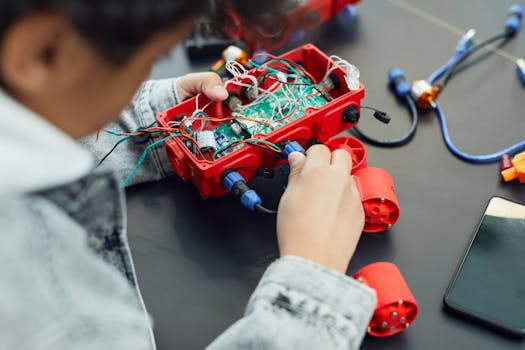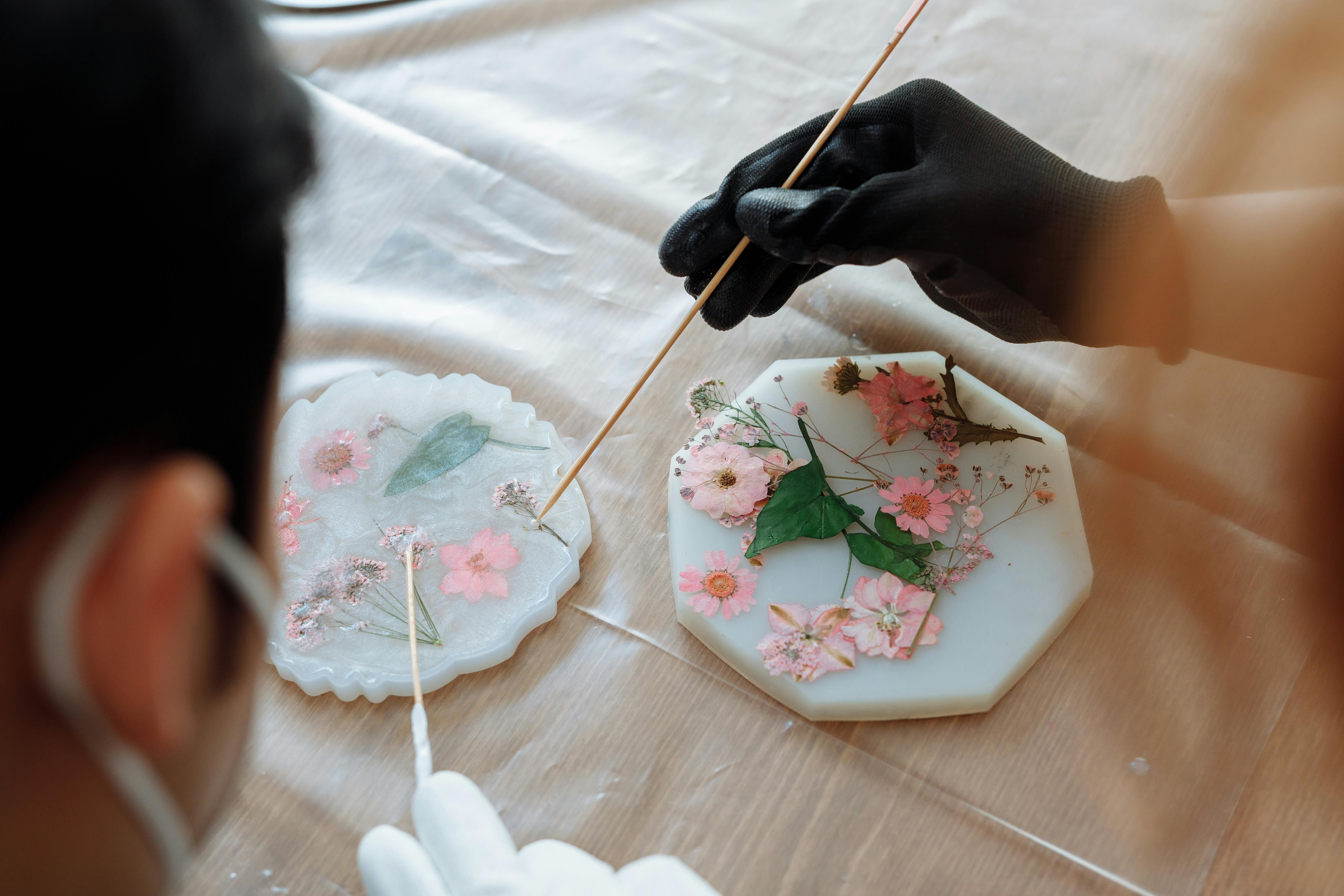As an affiliate, I earn from qualifying purchases, but this doesn't affect the reviews or recommendations—your trust is important to me!
Unleash Your Inner Scientist with DIY Lip Balm Experiment

Today, We're Making:
- - DIY Lip Balm Experiment
- - DIY Lip Balm Experiment-inspired Artwork: This craft would involve creating a piece of art reflecting the ingredients, colors, or final product of the DIY Lip Balm experiment. Children could paint or draw, utilizing an assortment of craft supplies. This would not only engage them artistically but would also reinforce the learning that happened during the lip balm experiment.
- - Paper Flower Bouquets - Spring Themed: Since March 18th is in spring, kids can make paper flower bouquets using simple materials like tissue paper.
Discover an Exciting Blend of Science and Beauty
Ever wondered if you could unleash your inner scientist while indulging in a spot of DIY beauty treatment? Wonder no more! Introducing a thrilling DIY Lip Balm experiment that perfectly marries chemistry with creativity. It's not just a science project - it's a fun and intriguing foray into the fascinating world of beauty science.
Unwrap the Science Behind Lip Balm
With this inventive experiment, you're not just making your own all-natural lip balm. No indeed, you're actively uncovering the fascinating scientific processes behind its formation. By the end of this hands-on, DIY Science exploration involving lip care and chemistry, we guarantee you'll be viewing your beauty routine through a whole new lens.
Ready for a DIY Beauty Adventure?
If you’re excited and can’t wait to start your DIY journey into beauty science, it's time to don your lab coats. So, prepare to embark on a DIY beauty adventure of a lifetime!
The Basics: Follow this Simple DIY Lip Balm Recipe
After igniting that spark to unleash your inner scientist, it's time to gather the essential tools and materials required for this DIY Lip Balm experiment. All you need are a few items found in most household kitchen pantries: coconut oil, almond oil, beeswax, honey, and a few drops of your favorite essential oils. The inclusion of essential oils is what escalates this science experiment to an entirely different level, tapping into the aromatherapeutic aspects of natural remedies.
There's an artistic, creative aspect embroiled in the process too. You're empowered to customize your lip balm to your personal taste, making this experiment incredibly personalized and fun. Adhere to the ingredient ratio of 2:1:1 for the coconut oil, almond oil, and beeswax, respectively. When incorporating your chosen essential oils, just remember, sometimes less is more. Generic plastic or metal lip balm containers can be easily sourced from online stores for storing your homemade lip balm.
The Science Behind It: Your Homemade Lip Balm Explained
Now that you're prepped with the basics, it's time to move to the crux of the matter: the underlying science in the making of Natural Lip Balm. When the coconut oil and almond oil (your chosen base oils) are combined with beeswax under heat, the concoction undergoes a process known as emulsion. This intriguing chemical reaction is the cardinal secret behind the creamy, soothing texture of lip balms.
Simply explained, the beeswax, which is a naturally occurring wax ester, undergoes a phase change from solid to liquid under heat. When mixed with the liquid carrier oils, an emulsion is formed resulting in a uniform, combined liquid that subsequently solidifies upon cooling to form your DIY Lip Balm. Breaking down the chemistry of this DIY beauty experiment creates an enriching learning experience.
The Process: Your Guide to Science At Home with DIY Lip Balm
Your scientific DIY project begins with placing the beeswax, coconut oil, and almond oil in a heatproof bowl over simmering water. Watch as the beeswax slowly starts to melt and the oils begin to combine, heralding the commencement of your fun science experiment.
Stirring from time to time ensures all ingredients are well incorporated. Once the mix attains a uniform consistency, remove from heat and carefully add in the essential oils. Stir until all the oils are well blended.
Next, immediately pour the mix into your lip balm containers while it's still in liquid form. Remember, the balm starts to solidify once it cools down. Let your lip balm set for a couple of hours or place it in a fridge for around 30 minutes to speed up the process. Once your balm takes on a solid, creamy translucent form, your DIY Lip Balm experiment is complete. It's science made fun, right there in your kitchen.

In Conclusion
Embarking on this DIY Lip Balm experiment is not only fun and engaging, it's a way to glean a deeper understanding of the captivating intersection between science and beauty. With your curiosity sparked, your lab coat on, and your ingredients amassed, you've handcrafted a delightful product that testifies to the wonders of science operating in our everyday lives.
Science Outside the Lab
Remember, science doesn't always need to be contained within the sterile walls of a lab, sometimes it's as personal and vibrant as whipping up your own lip balm in your kitchen. So, keep that spirit of exploration alive as you continue to unravel the mysteries of the universe, one DIY science project at a time. Your next beauty routine might just be your next experiment!

You May Also Like These:
DIY Lip Balm Experiment-inspired Artwork
Ingredients:
- Art paper (I recommend watercolor paper for the best results)
- Watercolors
- Brushes
- Palette for mixing colors
- Pencil and Eraser
- Lip balm (preferably clear)
- Craft glue
Instructions:
- Sketching: Begin with a pencil sketch. Draw symbols or designs of the main ingredients of lip balm ( beeswax, shea butter, coconut oil, etc.) on your art paper.
- Coloring: Proceed to paint your designs with watercolors. Let your imagination run wild, this is your opportunity to use different shades and colors.
- Drying: Allow the painting to dry completely. This step is important before proceeding to the next step.
- Lip Balm Application: Once the painting is dry, carefully apply a thin layer of clear lip balm to highlight the drawings, giving them a glossy effect.
- Gluing: Apply a thin layer of craft glue on the back of your artwork and stick it to a sturdy cardboard or frame.
- Drying: Let everything dry completely before displaying your DIY Lip Balm Experiment-inspired Artwork!
This unique crafting project not only allows you to create a beautiful piece of art but also educates about the ingredients and process of making lip balm, making it a fun and informative activity for the entire family.
DIY Lip Balm Experiment:
Ingredients:
- 2 Tbsp Beeswax
- 2 Tbsp Coconut Oil
- 1 Tbsp Shea Butter
- 4 drops Essential Oil (optional)
- 1 drop Food Coloring (optional)
Instructions:
- Melt the beeswax, coconut oil, and shea butter in a double boiler until completely melted.
- Add 4 drops essential oil and 1 drop food coloring, if desired. Mix well until color is fully incorporated.
- While the mixture is still liquid, pour into lip balm containers. Small pots or tubes work well. You need to work quickly as the mixture will start to solidify as it cools.
- Let the lip balms cool and solidify completely before using. This can take up to two hours.
Safe Use:
Always patch test homemade products on your skin before you apply it topically. Make sure you are not allergic to any ingredients.
<h1> DIY Lip Balm for Kids</h1> <p>This easy and fun DIY Lip Balm experiment is a fantastic way to teach your children about science, while also creating a useful and exciting final product. Below you will find a list of ingredients you will need, along with clear step-by-step instructions on how to make a moisturizing and soothing lip balm.</p> <h2>Ingredients</h2> <ul> <li><strong>Beeswax: </strong>1 tablespoon</li> <li><strong>Coconut Oil: </strong>2 tablespoons</li> <li><strong>Vitamin E Oil: </strong>1/2 teaspoon</li> <li><strong>Essential Oils: </strong>5-10 drops (optional for scent/color)</li> <li><strong>Lip balm tubes or small containers</strong></li> </ul> <h2>Instructions</h2> <ol> <li>In a double boiler, melt the <strong>beeswax</strong> and <strong>coconut oil</strong> together until they form a smooth liquid.</li> <li>Remove the mixture from the heat and add the <strong>vitamin E oil</strong> and <strong>essential oils</strong>.</li> <li>Stir the mixture until everything is fully combined.</li> <li>Pour the mixture into your lip balm containers, being careful not to overfill.</li> <li>Allow the lip balm to cool and harden at room temperature. This should take approximately 1 hour.</li> <li>Put the lids on the containers once the lip balm is fully set.</li> </ol> <p>And voila! You now have your own homemade lip balm. This makes for a great DIY gift, or a treat for your little ones to enjoy.</p>
Paper Flower Bouquets - Spring Themed Craft Project
Materials:
- Colored papers in your choice of spring colors
- Scissors
- Green pipe cleaners
- Glue
Instructions:
- Choose your paper: Select from various colors of paper to create vibrant flowers.
- Cut the paper: Fold the paper in half and cut out a half-circle shape along the folded edge to create petals when it is opened.
- Create the flower: You will need to cut out 6 of these half circles for every flower. Use glue to assemble the flowers, layering the half circles on top of each other, offsetting each one. Be certain to let them dry completely after assembly.
- Assemble the stem: Attach a green pipe cleaner to the back of the flower using glue. Allow it to dry completely.
- Create the bouquet: Repeat these steps to make as many flowers as you'd like for your bouquet. Bind them together with a pipe cleaner.
We hope you enjoy this fun, artsy project that creatively engages parents and reinforces the knowledge gained from the lip balm experiment. Happy spring crafting!
How to Create Paper Flower Bouquets with Kids
Materials Needed
- Tissue paper in a variety of colors
- Green pipe cleaners
- Scissors
- Ruler
Instructions
Step 1: Preparing the Tissue Paper
- Cut the tissue paper into squares approximately 5 inches by 5 inches. You will need about 6 squares per flower.
- Stack the paper squares. You can use different colors to make multicolored flowers.
Step 2: Creating the Petals
- Fold the stack of papers back and forth, like an accordion. Make each fold approximately 1 inch wide.
- Once fully folded, trim the edge of each end into a rounded shape. This will create the petal shape.
Step 3: Assembling the Flower
- Wrap a pipe cleaner around the center of the folded paper. This will serve as the stem of the flower.
- Carefully pull each layer of paper up towards the center, separating them to create volume. Repeat for both sides.
Step 4: Creating the Bouquet
- Repeat steps 1-3 until you’ve made enough flowers for a full bouquet.
- Bundle the stems together and twist them to join. You can also wrap them in some extra tissue paper or ribbon for a decorative touch.
Note: Be gentle when pulling the paper layers apart to avoid tearing.











